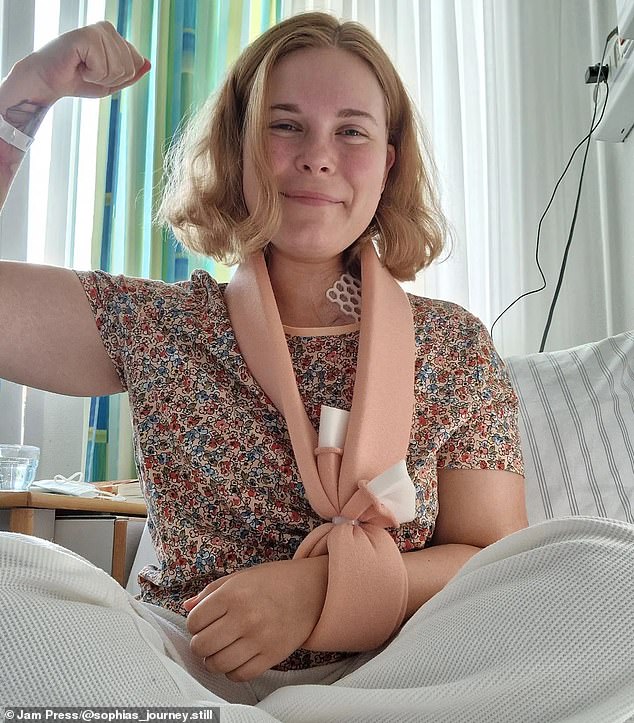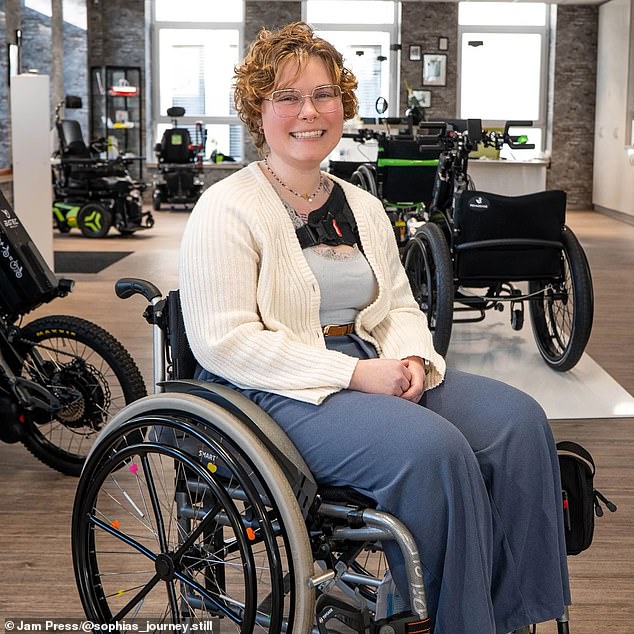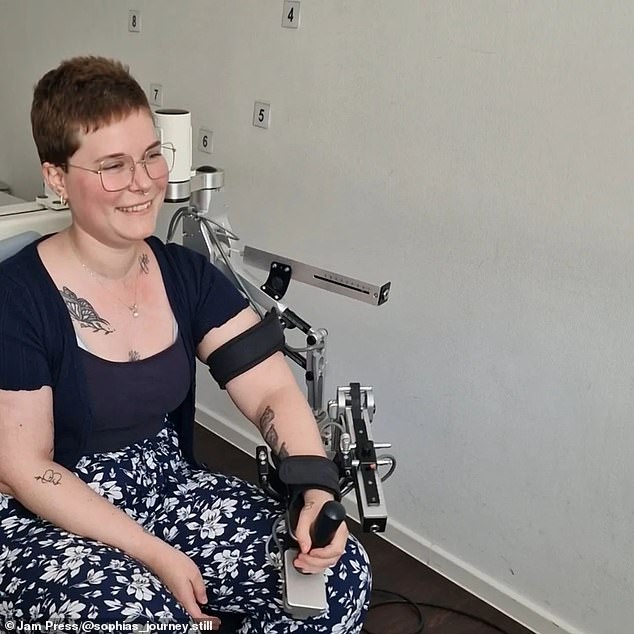A 26-year-old woman has revealed how she was left wheelchair-bound and her life “destroyed” after developing what she thought was a stomach bug.
In the summer of 2018, Sophia Cucchiara began experiencing frequent bouts of nausea, accompanied by a high fever, and lost a significant amount of weight.
The former nursing student did not give it much importance and assumed it had been a stomach virus.
But then Ms Cucchaiara developed swollen lymph nodes in her neck, joint pain and a rash, forcing her to visit several doctors to get to the bottom of her diagnosis.
It wasn’t until three years later, in September 2021, that an astute specialist performed the necessary tests to detect Still’s disease, a rare inflammatory form of arthritis.
Sophia Cucchiara thought she had all the classic symptoms of a stomach virus, but it was actually the start of a four-year battle to get a correct diagnosis.

Ms Cucchaiara said not knowing what was happening to her body was the hardest part of her journey.
Speaking about this long experience, Mrs. Cucchaiara from Cologne, GermanyHe said: “I was anxious, worried and scared.
‘Not knowing what was happening to my body was the hardest part of this moment.
‘It wasn’t just frustrating, at times I started to doubt myself.
‘I convinced myself that I wasn’t sick at all and that I was just exaggerating and that everyone has these symptoms, that I’m just sensitive.
‘I could no longer trust myself or my perception because no one could understand why I felt so bad.
At one point during her diagnosis, specialists believed she might actually be suffering from lymphoma, a deadly form of cancer of the immune system.
She said: ‘The oncologist was very convinced, even before doing the biopsy.
‘She had already informed me about chemotherapy and egg retrieval.

Ms Cucchaiara was eventually diagnosed with Still’s disease, a form of arthritis that affects 1 in 100,000 people.
“I had already prepared myself and I was very surprised that it wasn’t cancer.”
By early 2021, the pain had become torturous, forcing her to abandon work and studies.
She was referred to a rheumatologist, a specialist in musculoskeletal diseases, who eventually diagnosed Still’s disease.
‘I was glad, I thought that now that we know what it is, we can try to fix it.
“I felt relieved, especially because I finally knew I wasn’t imagining my illness.”
The disease is an autoimmune condition that is only diagnosed in adults and is thought to affect just 800 people in the UK, or one in every 100,000 adults.
This occurs when the immune system malfunctions and continually generates inflammation, even when there is no infection or injury to heal.
Symptoms include sore throat, fever, joint pain, and a salmon-pink rash that comes and goes quickly.

Despite taking multiple medications, Ms Cucchaiara’s pain is still severe and she relies on a wheelchair to get around.

Symptoms of Still’s disease may resemble those of a virus, including fever, rash, and joint pain.
There are several medications that can help control the symptoms of Still’s disease, including nonsteroidal anti-inflammatory drugs (NSAIDs), disease-modifying antirheumatic drugs, steroids, and biologic therapies.
Ms. Cucchaiara injects herself with medication every day.
She said: ‘I have become accustomed to injecting myself every day and have accepted the fact that there is no cure.
“There are days when it is really difficult, for example when I have to cancel plans or appointments, on days when the pain is especially intense or if I am in the hospital.”
Despite medication, he continues to suffer excruciating pain in his joints and muscles, as well as bladder cramps. The pain has become so severe that he relies on a wheelchair to get around.

Ms Cucchaiara was forced to give up her nursing career due to her disability and now wants to raise awareness about her condition.
She said: ‘I can’t say exactly what hurts the most because it often varies, often it’s the hips, knees and wrists, but sometimes something completely different.
‘I still take several pills, 12 a day, and patches to relieve the pain.
But I’m proud that I never gave up.
‘Thanks to my wheelchair I can go on holiday again, visit festivals and concerts and go on trips with friends. None of that was possible before.
Sophia, who is unable to work as a nurse due to her illness, has already completed her studies and will be teaching other budding nurses in the future.
He added: ‘I kept fighting and never gave up, and I won’t do so in the future either.
‘It may be difficult, there will be times when you don’t want to continue, but always keep in mind the good times, because they are always worth fighting for.’

